Ian Bancroft spent just under four years working and living with his family in north Mitrovica.
As coordinator of the European Union Rule of Law Mission (EULEX) office covering the north of Kosovo, he had the unique opportunity to work with and have access to both the power structures and regular citizens who live in the north of Mitrovica. But the north is much more than Mitrovica; there are four municipalities and history and traditions that many citizens of either Kosovo or Serbia know very little about.
In his new book, “Dragon’s Teeth: Tales From North Kosovo,” Bancroft dives into lost histories, turbulent presents and uncertain futures. He reveals the uniquely multicultural nature of the north; over 4,000 Albanians across 10 villages continue to live in the north along with significant numbers of Bosniaks, Roma, Ashkalli and Egyptians, Turks and Gorani. We don’t know exact population numbers because there hasn’t been a full census conducted since before the war as Serbs across Kosovo boycotted the 2011 census.
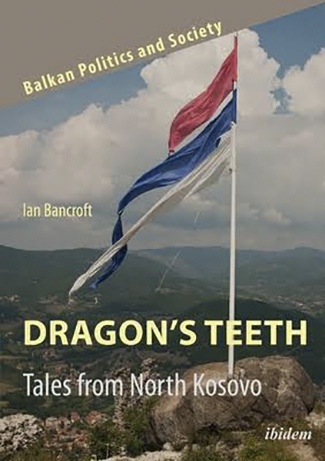
Ian Bancroft’s new book delves into the rich history and modern life of the north of Kosovo, where he spent four years living with his family. Photo: Book cover.
When talking about Mitrovica and the north you can’t do it without speaking about the south. It is much more complicated than a bridge over simply dividing the city between Albanians and Serbs, as many in the international and local media have portrayed it. Bancroft shows how the lines blur and mix over both sides. The history and culture is much more complicated than is usually depicted.
In this interview he discusses figures like Oliver Ivanović who he knew well. Ivanović was a controversial figure: He was head of the Bridge Keepers, a group that blocked Albanians from crossing the bridge that separates Mitrovica, and he would become Serbia’s “Secretary of State for the Ministry of Kosovo and Metohija.”
Ivanović later became known for his efforts to reach out to Albanians in Prishtina and his political break from the Serbian government, until he was murdered in January 2018 — no one has been held responsible for the murder. At the time of his death he was facing a retrial for war crimes, having originally been convicted by EULEX judges before the Court of Appeals in Prishtina annulled the original verdict.
A continual theme in the north, as in all of Kosovo, is the war and how justice has or has not been served. In the north that issue becomes even more fraught with competing narratives and a society still desperately being pulled by many different political forces.
Bancroft also discusses the proposed land swap that has repeatedly been alluded to by Kosovo President Hashim Thaçi and Serbian President Aleksandar Vučić and how many northerners are as apprehensive about this as their neighbors to the south.
Before moving to Kosovo, Bancroft worked in Brčko, Bosnia and Herzegovina, as head of office for the Organization for Security and Co-operation in Europe (OSCE). He has spent more than a decade in former Yugoslav states and has written about the region for The Guardian and Radio Free Europe.
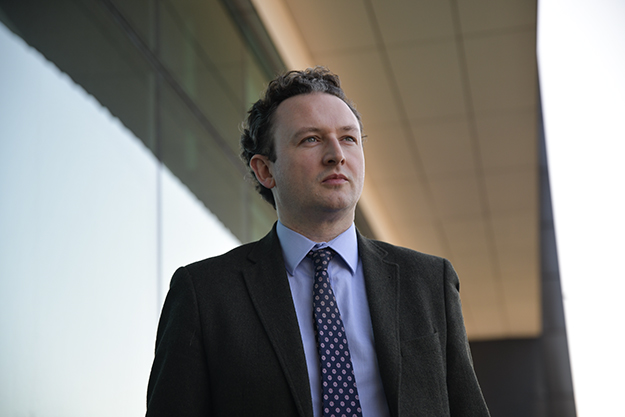
Bancroft’s position as head of EULEX’s office in the north of Kosovo meant he had privileged access to both people in positions of power and regular citizens. Photo: Atdhe Mulla / K2.0.
K2.0 spoke to Bancroft about confronting the legacy of the war, frustrations with the current state of limbo, the enduring difficulties of reconciliation and the efforts to forge a shared community with the rest of Kosovo.
K2.0: What motivated you to write about the north of Kosovo?
Ian Bancroft: One of the motivations was regretting not writing about Brčko. I always regretted it. I made plenty of notes during my time there but I always regretted not structuring those thoughts to be more systematic. After two years in the north of Kosovo, and I knew I would be staying two more years, I resolved to keep trying to be more systematic and write a book.
Of course, the minute you write a book people come to you with snippets and facts and things you should read, people volunteer to take you places you might not have explored. After two years in a small context things begin to become more repetitive. It was a real sort of spur to re-engage and become more fascinated with all these nuggets of history.
One of the criticisms you’ll get is that you’re a foreigner speaking for other people.
It would be a fair critique. I’d like to see more people from the north of Kosovo, and Kosovo and the region in general, sharing their stories. I was a foreigner living there and that meant having some privileged access. I was working for an international mission and I have access to people.
But one of the quandaries of the book is that there are many things not in it — because of my position there are things that I wasn’t allowed to divulge. The voices there are a multitude of voices. Some come directly through quotes from those individuals themselves and others come through in their influence in the way I present different things. Even in the way I’ve chosen to do the book itself, even what I have omitted, has an impact on that so-called voice.
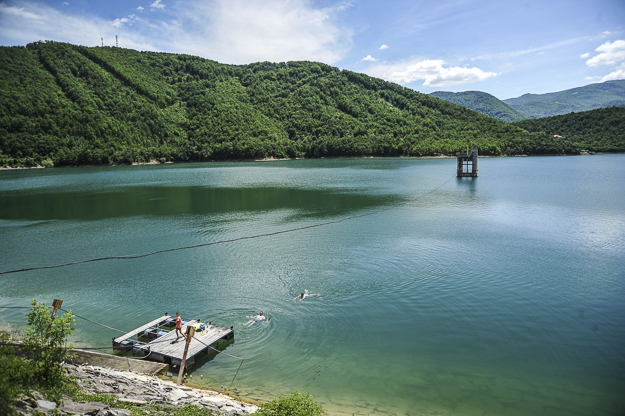
Bancroft highlights that much of the focus on the north of Kosovo inevitably centers around Mitrovica but that the north is much more than a “divided city.” Archive photo: Atdhe Mulla / K2.0.
The thing about north Kosovo is the sheer diversity. You have Bošnjačka Mahalla, Çabra, the Kosovo Albanian populated village in Zubin Potok municipality all but obliterated in 1999 and reconstructed and many, many people have come back to live there. One of the stories I wanted to convey is why had people come back? Why had people returned?
We have these places in Kosovo or Bosnia Herzegovina where people haven’t returned even though many of the conditions have been in place in terms of housing reconstruction and improved security and they still haven’t returned.
In Çabra, I was told the village is even bigger than it was prior to the war. There are cultural dimensions, religious dimensions and sporting dimensions. So there are a lot of different voices that I tried to convey in this, just to try and demonstrate the complexity that there is no one narrative, and I try to explain the disparity of the individuals who make up the population there.
One of the most interesting parts of the book, to me, is the exploration of the history of the north and the opening of the Trepča mines, only 90 years ago.
It’s a fascinating story. You have to go back to the Saxon miners who were brought in by the Romans because of their prowess. But you also have to go back to the Ottoman times and then some of the restrictions that were put in place; the mines became pretty moribund. As indeed they are to all intents and purposes today, sadly.
I remember a former colleague taking me to Stan Terg or Stari Trg on the south side of the [River] Ibar and past the remnants of the old hotel. We kept going up higher and we saw the old swimming pool and the old diving board is still intact.
So you see the legacy of the foreign engineers and management and how they once lived and the legacy they left behind: The tennis courts in Zvečan and the English style bungalows.
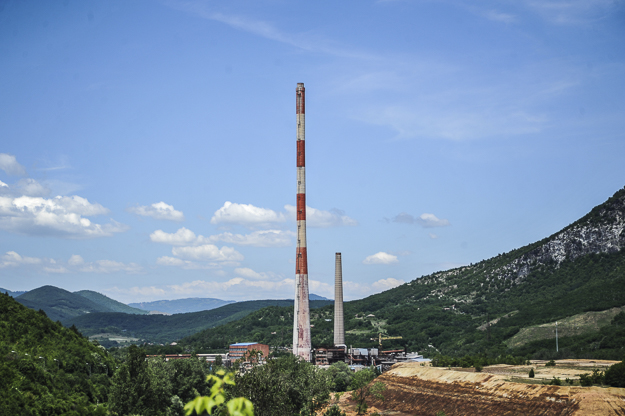
Bancroft became fascinated with the history of the Trepça mines, bringing often forgotten details of its colonial past to the surface. Archive photo: Atdhe Mulla / K2.0.
A fascinating person is the Irish American mining magnate Alfred Chester Beatty who established the modern-day Trepča 90 years ago for the British Selection Trust mining company. You know he sent mining engineers to Trepča, looked at old maps and did a lot of research, but it was the religious dimension: He told people to go and look for the remnants of old churches and that’s where they would find the entrance to the old mine shafts.
He was a really fascinating figure and when you talk to people in the north today his legacy is gone. People have no idea who he was. He has a fascinating museum in Dublin, where he salvaged old documents of value to the Orthodox church but also old Islamic texts. It’s a real global collection that anybody in Dublin should go and explore.
A lot of this historical value has been lost and I hope at some juncture there will be some effort to revitalize, in particular, the architectural remnants you see in Stan Terg or Stari Trg that you see just outside of Mitrovica south and the Engleska Kolonija [English Colony] relics in Zvečan. For instance Hotel Number Three is still populated by internally displaced persons even though it’s 20 years on from the end of the war.
Going back to the diversity of the area, a lot of people think of the north today as being only Serb. But in the past, people came to Mitrovica to make their fortune from all over the world, like a frontier town in the American Old West.
Obviously the diversity that exists today is less than the diversity that existed in ‘98-’99. It is a unique and a positive one.
But on the flipside, the demographics of Bošnjačka Mahalla have been fundamentally transformed. And there are areas in Suvi Do and Brdjani that every spring you have rows over the rebuilding of houses. So it’s not a golden picture or a rosy picture but it’s important to look at the diversity that does exist and break down the misconception that it is 100% populated by Serbs and to try to see in that diversity some seeds of optimism for the future.
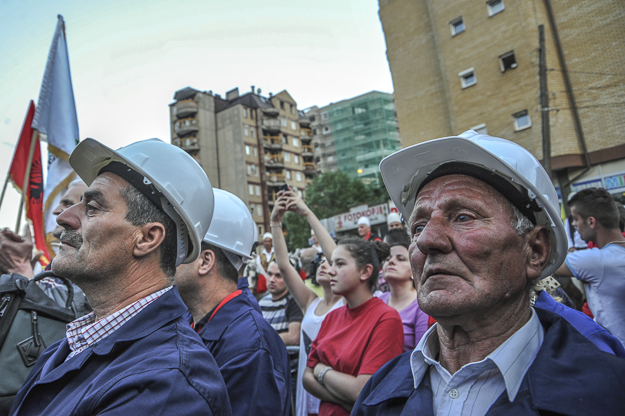
In his book, Bancroft writes about the long history of resistance from miners, dating back to the 1920s. Archive photo: Atdhe Mulla / K2.0.
And you’re right, the north in general — not just the four municipalities that make up the north of Kosovo — has always been a frontier. I write about some of the historical points of looking at how the north was divided up around World War II.
So the relation with outsiders, [between] the mining legacies in the ’20s and the rise of a resistance to the exploitation of miners, and how a labor movement rose up during the ’30s and one of the first acts of resistance against the Nazis taking place in the north of Kosovo. A group of miners sabotaged the aerial railway line that was carrying resources from Stan Terg or Stari Trg to Zvečan.
One of the aims of the book is to try and demonstrate some of these relationships with the outsiders and legacies of resistance in the north which have formed over the years.
I think many people also don’t realize that Mitrovica is a big university town and that is a big industry for the town itself. The university drives the economy.
Yes, thousands of people come every year to study in Mitrovica, and to give it its full title: The University of Prishtina Temporarily Relocated in Kosovska Mitrovica. They insist on the temporary relocation, although it becomes more permanent by the day.
But thousands and thousands of students come to Mitrovica North. It’s a boon for the place. It brings young people, and you know [from] sitting in Prishtina about the vibrancy of having young people in your community.
They come to find a relatively normal existence. They come and find a warm community.
This was something very different to Brčko, where the town was completely dead during the week because most of the young people have left to go to university elsewhere. It brings business, it brings these useful ideas and perspectives.
But on the flipside, many people are apprehensive when they first arrive, coming from Kragujevac, Kraljevo and Niš. They come with an apprehension that the security situation is extremely bad in Mitrovica.
They come to find a relatively normal existence. They come and find a warm community. That, on the one hand, breaks down some of the misinformed ideas about Mitrovica. Maybe on the other hand it makes them critical thinkers about what they have been told about a security reality.
Many of these students leave caring more about Kosovo and the situation of Serbs in Kosovo than they would have before. I think some leave with a clearer picture and some leave feeling more impassioned about the issue of the reality of Serbs in day-to-day Kosovo.
But in terms of the vibrancy of life or diversity of life in north Kosovo, I can’t imagine how the town would be without the university.

The university in the north of Mitrovica is an important part of both the economy and the day-to-day social fabric. Archive photo: Atdhe Mulla / K2.0.
You discuss in your book how a lot of young people are growing up with many myths and mythologies about the war, what happened and ideas about the south of Kosovo.
Yes, I refer to a mural that appeared around Trg Šumadija where the enormous statue of Czar Lazar is. And that’s a mural taken from a photograph, if I recall correctly, of six or seven young men who lost their lives around the battle of Koshare. And from the backstory that I got from the very talented artist who made it, this was very different from the work he normally did.
This was a commissioned piece by several young men who won money gambling or by saving it and wanted to commission this mural [of people] who in their eyes were heros, even though they themselves would have been toddlers or in nappies during the time of the war.
They wanted to find ways of lionizing these other young men, who would have grown up in a completely different age. And graffitti is a fine way of doing this as well.
Another example: You’ll see football fans opposing the various international presences, KFOR, EULEX and the domestic security — the Kosovo police and ROSU, the special operations units. You’ll also see graffitti about how Kosovo is Serbia and Crimea is Russian. And having the two flags intertwined. And you’ll see assertions around town about the parallels people draw between different causes.
How do people feel about the long rumored land swap proposal?
There was some research recently that people were very apprehensive about the idea. I think there was a lot more skepticism about it than many others. The community isn’t so happy about having to integrate fully into the Kosovo structures. What has been seen is integration on a lot of fronts, police, judiciary.
Some will argue that it has just taken place on paper, but customs revenues are collected and go into a development fund. There are very substantive changes but if you ask people if they would be happy seeing their education system or health care system being integrated, being a part of the Kosovo education or health system, you’ll get a lot more resistance.
On ongoing cooperation
I think it is always interesting to get down to that local level. This is where Boletini is buried. Delegations wind their way up to show respect at his grave. The Kosovo and Albanian flag is flown there. They have found a way to live together.
A secondhand quote was given to me by one of the neighbors of the Sokolište monastery: The monastery would provide the excesses they produced on their local land to the villagers and the villagers helped build the walls. So there were ways of finding mutual cohabitation.
It has this famous sculpture of the Mother and Child, and people from all communities, particularly when a husband and wife are struggling to conceive or have an illness, they will touch the sculpture. And hopefully they will be bestowed with good fortune.
[There used to be the central] mosque by the main bridge that was destroyed in 1999. I think it's the reconstruction of that mosque that will be a symbol of the progress that has been made.
On the flip side, the land swap. Serbs in the north occupy a very privileged status at times — you know the juncture of double salaries; people working for two institutions at the same time. You know if you work for two institutions at the same time you are paid better than the Serbian average.
So there is a fear that if there is any resolution to the issues to Kosovo in general or the north in particular it will mean that they will essentially be forgotten about and they will just be any old municipality. If the land swap was to go ahead, Mitrovica would just be another municipality on the periphery of Serbia and would invariably struggle.
There is something about being at virtually the center of this dispute that it does bring certain benefits for many in the north.
Of course if there was a land swap there would be a transition plan. But over time those particular advantages they enjoy today would be diluted away.
This is why people are concerned about the university that gives so much life to the north. If the university would cease to exist it would mean a chunk of the very lifeblood would be lost.
There is a lot of skepticism about proposals that come from the outside or the international community. A lot of Serbs in the north feel that a lot of these proposals are coming down without consultation and are things that are decided elsewhere that they’re forced to swallow.
It may not be played out in the streets as it was once upon a time, but if you have conversations in the coffee shops or cafés there is a lot more resistance to those sort of proposals. It might be the case at some juncture they may have to swallow something.
You write in the book that the north is a warm community, a warm social community.
I think that is the only way people can cope with living in a society where there is so much uncertainty.
Since the years prior to the war, [the riots of] 2004 and the return to the fears and dependencies, the protest [at border checkpoints] in 2011, there has always been some constant rupture that people have had to deal with — they can’t just shut it out. It’s a very small community where people can’t just isolate themselves from what’s going on around them.
People have had to deal with this first hand. Politics affects your day-to-day life. The community has been formed through difficult times. People have experienced this in their late teens, 20s and now they’re in their early 40s. They have kids and want them to grow up in as normal an environment as possible.
I met many people who have experienced such a huge amount of anxiety and stress. I think I can see how living in such a conflicted environment takes its toll on people. It’s not that there aren’t cases of people being profoundly affected.

Archive photo: Atdhe Mulla / K2.0.
But as I said, it’s a coping mechanism; as a social mechanism people come together to assist to make life a bit more tolerable in such uncertainty.
You also knew Oliver Ivanović quite well and wrote about him in the book.
I met Oliver when he was [Serbia’s] secretary of state for Kosovo. So that must have been back in 2009-10, or earlier. So I knew him for many, many years. I knew him and his attempts to reach out beyond his community and confront and chart a potentially different course and reach out with an open hand instead of a clenched fist and to try and articulate a different course.
After his death so many people said that they respected Oliver for his willingness to debate. They didn’t always agree with what he had to say and he didn’t always agree with what they had to say but that willingness to engage in really substantive dialogue about the mistakes the community had made. I remember one speech he gave criticizing the naivety of Serbs about Albanian history, culture and language.
On ‘The Bridge’
Everyone focuses on the main bridge that has been blockaded for years and has become the subject of op-eds and many ruminations. But 400-500 meters to the east is a bridge you can drive over without any obstacle. The only obstacle is the one that might exist in your mind.
There is also another bridge to the west to Suvi Do that people cross over every day and can be used to cross into the center of Mitrovica. So it’s really free.
There is the green market in the north and people cross over from the south and the ETC shopping center — these are two things that keep people flowing across the river on both sides.
He used his position within the community to talk openly about and to openly criticize the mistakes his community were making.
I think we need those individuals who are willing to be courageous enough to speak bluntly but also to listen and engage and dialogue; about how people can feel peacebuilding can be supported. And how communities can be educated, how communities can be brought together. To look for opportunities and to reflect on the mistakes made, etc.
There is a big hole with his murder.
But he was also a member of the Bridge Watchers, so he has a very complicated history.
Absolutely. The interesting thing is to look at the history of a place like Northern Ireland where a lot of paramilitaries existed and how they transitioned to peacebuilding work afterward.
Now, I write in the book about the reflections on motive. Do they feel guilty about some crimes that they have been involved with or witnessed? Do they do it for that motive? Or do they do it for genuine peace? Or maybe they do it for both, of course.
Maybe it doesn’t matter. The point is that these people tend to be respected in their communities and when they speak they tend to be listened to. And so I welcome the decision of anybody who has had that complicated history and that complicated past to take those steps to try and use their standing for positive ends.
There is a saying in the U.S. that only Nixon could go to China. Meaning it’s the hardliners who can make a true peace.
Yes, absolutely I think there is a lot of potential in this area for those who have occupied positions during wartime to look at how both dimensions stand in their own communities and maybe the grudging respect they can demand from other communities. For the way that they’ve tried to communicate with those other communities or carried themselves vis-à-vis the other communities.
And it’s not a case of drawing a line in the sand but to sort of try and deal with both of those things simultaneously and to try and look at both as a resource for the future.
It’s not to say that they are the sole peacebuilding asset.
I mean, the stories that have come from the missing persons in Kosovo and Serbia and the initiatives that they have been taking to reach out and do this in a dignified way, in a clandestine way building relationships, building mutual understanding, and those victims who are still waiting for answers for their loved ones have done a lot of inspiring peacebuilding work. And the victims of wartime sexual violence. They’re all resources that can be used in the cause of peace.
How can there be forgiveness when there has been no justice?
I concur and it’s one of the points I make for some of the Serbs who think there has been no justice for their crimes [committed against them], and we get into a trap here where we need justice for all crimes that have been committed.
This is sheer evasiveness and you know it's a lie.
Where those crimes that have been swept under the carpet, denied, ignored, I’ve met victims who are almost in despair at this. Even if you’ve had justice done in a far away court, like the ICTY, you never feel that you’ve seen justice done for their particular crime. And then we can get into the realm of looking for alternatives for this incredibly inept system domestically and arguably the [inept] international system of prosecuting war crimes.
But arguably we’re almost too late in the day. People feel that no one cares about their story anymore, no one listens anymore.
And there is an argument I kept hearing over and over: “Until there is a resolution of status, there is no justice.” It’s almost like an implicit acknowledgement of guilt. “But if we prosecute and acknowledge crimes we’re giving reasons for why Kosovo should be independent.”
I’ve heard this in Bosnia as well. “If we prosecute crimes in Srebrenica and other genocides then we undermine the case for the existence of Republika Srpska.” This is sheer evasiveness and you know it’s a lie — that if suddenly status were to be resolved or Republika Srpska guaranteed then suddenly there would be a willingness to prosecute crimes is simply not true.
These crimes have been denied, relativized and distorted and these will not be dealt with completely through having more war crimes cases now. I think we’ve reached the point where we need to have more prosecutions and strong ones that bring convictions with a hell of a lot of change in other areas, changing narratives in the public sphere.
We have to change education and how history is taught because otherwise we are fighting a losing battle. RECOM’s [regional fact-finding] initiative has been talked about for years and years and has sadly never materialized. You know there was a very good transitional justice strategy in Bosnia that has never really seen the light of day. There has been plenty of good thinking that has gone into these and plenty of expertise and dedication but the state of play in 2020 is a grim one.
We need to have courageous figures, like Oliver, who will come and tell their communities what they did wrong and what was done in their name.
How will the future generations understand what happened in the ’90s? I fear what will happen in 20 years time when I’m banging my head against a wall listening to young people in their teens, 20s and 30s on their terms of reference about what happened.
You can’t just forget and move on, you can’t just expect to put it to one side and expect to move forward on economic domains and infrastructure; this has to be dealt with properly and to go back we need to have courageous figures, like Oliver, who will come and tell their communities what they did wrong and what was done in their name.
This is why there is a responsibility to keep their memory alive and to educate, but I don’t know where these people are going to be found.
Has the international community ultimately failed here?
There is an argument that the ICTY was not supposed to do reconciliation, and I write about this in the book as well. What the ICTY has provided is an incredible factual basis of what went on throughout the region.
It is a factual basis that is one of the most rigorous, and for some of us, the most compelling piece of work. That will provide an invaluable resource for historians for generations and generations. The question then is how we take those facts and ensure that they are disseminated throughout the education system. How we will get young people to ask their parents and grandparents about these facts.
On the ‘golden generation’
This may sound peculiar but this is a golden generation. There are people in the generation who are 40 and above who can still speak both languages, or certainly have comprehension of another.
Young people now grow up in complete isolation from one another. Maybe now they’ll speak German or English together, or Chinese.
At the moment, it's the older generations who still have this linguistic capability but also a shared memory of when they used to spend time with their Albanian neighbors or play football in the streets or have class members from the other community. When it was something more normal.
There are some good initiatives to try and bring together people from each side. The Mitrovica Rock School of course, with multi ethnic bands.
Those sort of outlets we have to continue looking for. Otherwise we end up with young people who cannot communicate with each other but don’t even know why they should.
And you can knock down all the barriers between north and south but people wouldn’t understand why they need to communicate with one another.
Is the international community responsible for that?
Well in the Brčko case the education system was virtually reformed to ensure the curriculum was taught to unite rather than divide. And if it can be done in the microcosm of Brčko and one of the issues that was not dealt with at Dayton because it was so complicated, I do not see why the international community remit could not be put to those purposes to teach a more unifying curricula in Bosnia and Herzegovina or Kosovo.
Of course, it wouldn’t have the mandate to do it in Serbia, where the international community has never been as present. Unfortunately education in that sense has never been a dimension that we discuss enough in the EU accession requirements. Cooperation with the ICTY used to be a requirement but how the verdicts of the ICTY are ultimately handled or told in the domestic context seems to be of little concern to the EU.
We know the state of play in the media and in places like Serbia and on social media for those of us who have been dealing with this for 15 years from 2005 and 2006. If you told me this would be the reality today even in Serbia and other places in the region I would have deemed you to be an utter pessimist. But sadly that is what we live with.
Let’s end on something lighter — what is the cultural scene like in the north?
The things I write about in the book are the Mitrovica Big Band and the Jazz Festival which has quite a big standing on the international jazz scene. I also write about a small little utopia in the back streets of Bošnjačka Mahalla, Aquarius, that puts on poetry reading, theater plays and does artistic workshops.
I wouldn’t say that’s a place that is necessarily representative of the culture of the north. My point focusing more on places like that is looking for the seeds of optimism, that people can come to and come to from the north and south for concerts, a very sort of shared space.
You know where people can do talks, can express opinions openly about things outside the north. How do people from Prishtina, Skopje, Gračanica look at an issue? When I write about that culture I’m writing about the unique spaces as opposed to the normality in the north as such.
Those spaces are absolutely vital and they have tended to exist without the support of internationals. They get some support from internationals. People have invested their own time and resources because they feel that these spaces are absolutely vital and necessary and they make a lot of personal sacrifices. And I felt their story needed to be told.K
Feature Image: Atdhe Mulla / K2.0.








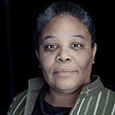
I remember reading Ian Bancroft and Matthew Parish on Transconflict back in the day. Great friends of both Bosnia and Herzegovina and Kosovo.